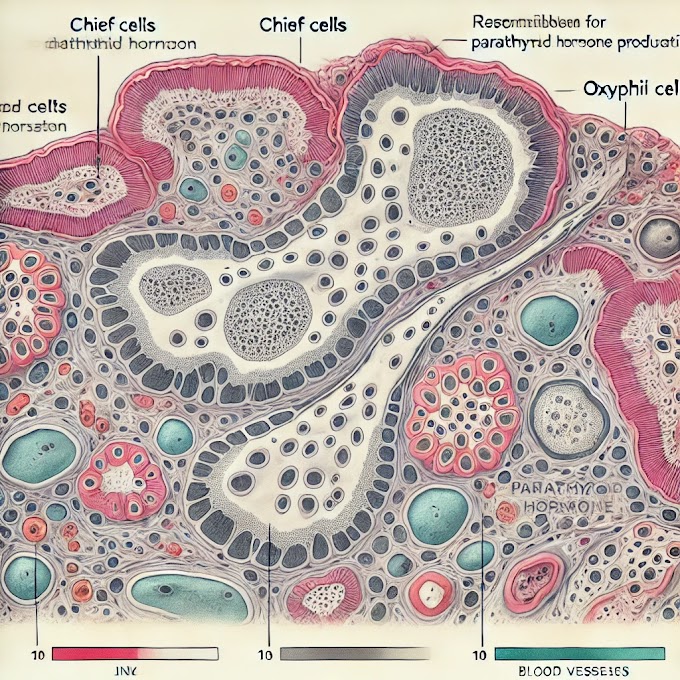Under The Light Microscopic View
When examining a histology slide of the duodenum, the initial segment of the small intestine, several key identification points can be observed:
Mucosa:
- Simple Columnar Epithelium: The mucosa is lined with a single layer of tall, closely packed columnar epithelial cells that aid in absorption.
- Intestinal Villi: Finger-like projections on the mucosal surface increase the surface area for nutrient absorption.
Submucosa:
- Brunner's Glands: These are mucous-secreting glands found in the submucosa of the duodenum, contributing to the alkaline environment that helps neutralize acidic chyme from the stomach.
Muscularis Externa:
- Smooth Muscle Layers: The muscularis externa consists of inner circular and outer longitudinal layers of smooth muscle responsible for peristalsis.
Serosa:
- Connective Tissue Layer: The outermost layer, the serosa, provides structural support and protection.
Blood Supply:
- Blood Vessels: Observe blood vessels running through the different layers of the duodenum, supporting the transport of nutrients absorbed in the mucosa.
Glands of Lieberkühn:
- Intestinal Glands: These are simple tubular glands in the mucosa that secrete digestive enzymes and absorb nutrients.
Peyer's Patches:
- Lymphoid Aggregates: Occasionally, you may find clusters of lymphoid tissue, known as Peyer's patches, in the mucosa. These contribute to immune defense in the small intestine.
Microvilli:
- Brush Border: On the surface of the columnar epithelial cells, microvilli form a brush border, further increasing the absorptive surface area.
Nerve Plexuses:
- Myenteric Plexus (Auerbach's Plexus) and Submucosal Plexus (Meissner's Plexus): These nerve plexuses regulate the motility and secretory functions of the duodenum.
Understanding these features helps in comprehending the role of the duodenum in the digestion and absorption of nutrients. The presence of specialized structures like villi, glands, and microvilli reflects the adaptation of the duodenum to its digestive functions.
The histology slide image of the duodenum, showing labeled areas for structures such as villi, Brunner's glands, goblet cells, and the various layers (mucosa, submucosa, muscularis externa, and serosa).Duodenum (Small Intestine) Histology Overview
Anatomy:
The duodenum is the first segment of the small intestine and has a distinctive histological structure to support digestion. Its wall consists of several layers: mucosa, submucosa, muscularis externa, and serosa. Key features include finger-like projections called villi and glands known as Brunner's glands in the submucosa.
Physiology:
The duodenum plays a crucial role in chemical digestion and nutrient absorption. Villi and microvilli increase the surface area for absorption, while Brunner's glands secrete an alkaline mucus to neutralize stomach acid, protecting the intestinal lining and providing an optimal pH for enzyme activity.
Histopathology:
In histology slides, the duodenum shows tall, finger-like villi lined by simple columnar epithelium with goblet cells. The presence of Brunner's glands helps distinguish it from other parts of the small intestine. Pathological changes, such as atrophy of villi or inflammation, are associated with diseases like celiac disease, Crohn's disease, and duodenitis.
Clinical Significance:
The duodenum's function is essential for nutrient absorption and digestion. Disruptions in its structure or function can lead to malabsorption disorders, which may result in nutritional deficiencies, diarrhea, and abdominal pain. Early histological examination of the duodenum can aid in diagnosing conditions like celiac disease, infections, and autoimmune responses affecting the gut.


%20with%20labeled%20areas.%20The%20image%20should%20display%20key%20features%20such%20as%20villi,%20Brunner's%20.webp)

















0 Comments